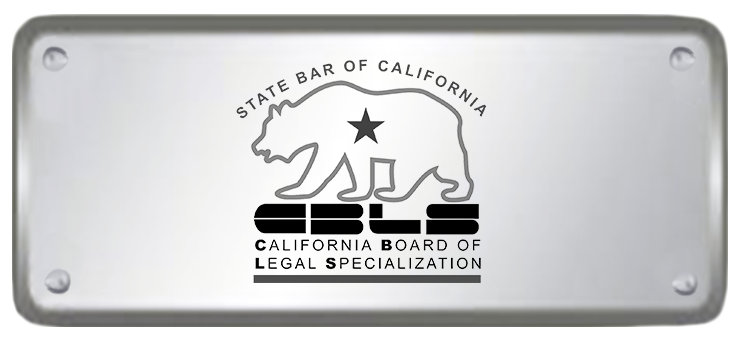CHILD CUSTODY AND VISITATION IN CALIFORNIA
Whether it is a divorce or a parentage action, custody and visitation of children is the most delicate area of family law. Even the initial act of telling a child that their parents will no longer be living together can be incredibly complex, albeit necessary. From that point forward, many parents struggle with custody and visitation plans and sometimes never come to any enduring agreement. At Antonyan Miranda, we handle amicable custody matters and high-conflict custody matters, including those that have been influenced or directly impacted by Child Welfare Services (CWS). This is simply not an aspect of your life that you want to leave to chance.
Child custody laws in California direct the courts to make child custody orders that are in the child’s best interest. Child custody laws provide the court useful guidance in deciding what is in the best interest of the child, such as:
- The ability of each parent to care for the child.
- The age and health of the child. Oftentimes, when a child reaches a sufficient age or maturity, the child’s wishes are taken into consideration. At age 14, the Court must consider a child’s preferences. However, nothing prevents a court from considering the wishes of a child under the age of 14 if the court finds they are of sufficient age and capacity to provide an intelligent preference. Importantly, a child’s preferences are only to be considered – the court is not required to follow them. Children can make decisions based on emotions, for instance, alienating one parent or wanting to live with a less-strict parent. Sometimes the child doesn’t have the emotional maturity to make such a decision and may decide to reside with a parent who could put them in harm’s way. In cases such as this, the court may not follow the child’s wishes.
- Any factors that can put the child in harm’s way. This includes a parent having a history of domestic, child, or substance abuse.
What Are The Different Types Of Child Custody In California?
Child custody orders can be divided into two categories: legal custody and physical custody. An award of legal custody or physical custody can either be to both parents jointly (known as joint legal custody and joint physical custody) or to one parent solely (known as sole legal custody and sole physical custody).
Legal Custody
Legal custody determines who has the legal authority to make decisions for the child, such as education, healthcare, religion, and extracurricular activities.
Sole legal custody means only one parent has the right and responsibility to make important legal decisions for the child. Factors that could lead to one parent not having legal custody include a history of serious mental illness, domestic violence, substance abuse, or other factors that might make a parent an unviable decision-maker for the child.
Joint Legal Custody means both parents share the rights and responsibilities for making important legal decisions for the child. There are exceptions in emergency situations, such as when a parent needs to obtain emergency healthcare for a child. Also, if you share joint legal custody of a child but cannot agree on certain issues such as education or healthcare, then either parent may seek an order to obtain sole legal custody to ascertain legal custody in issues they cannot agree upon.
Physical Custody
Physical Custody means the parent whom the child primarily resides with and cares for the child.
Sole Physical Custody means one parent has all or most of the custodial timeshare with the child, subject to visitation by the other parent. Generally, a parent with greater than 65% timeshare of a child has sole physical custody, although there is no bright-line rule.
Joint Physical Custody means the child lives with each parent for a considerable amount of time. While joint physical custody could mean that custody is equally split 50/50, that is not required. Instead, joint physical custody means that the child has frequent contact with both parents during a given period. Factors such as the parents’ work schedules, distance from school to a parent’s home, engagement with the child’s professional providers, and historical involvement with the child are all considerations for the court when determining whether joint physical custody is in the child’s best interest.
What Is a Parenting Plan in California?
Child visitation in California is often referred to as a parenting plan, which is included in a custody order to define how and when parenting of a child is to occur. Parenting plans most commonly define the visitation schedule during a calendar week by specifying which days and times the child is to be in the care of each parent. Holiday schedules, school break schedules, vacations, and child exchange locations are also typically included in the parenting plan. It is ideal if the parents can agree on the parenting plan together without court intervention to minimize legal expenses and increase co-parenting and cooperation. If that is not feasible, then a judge will decide what parenting plan is in the child’s best interest.
Can You Change Your Custody Orders?
Either parent can petition the court for a modification of an existing custody and visitation order. However, there must be some cognizable change or other compelling best interest reason for the court to modify an existing child custody and visitation order, particularly if it has been effective for a significant period of time. Sometimes, the court will employ a higher standard of proof and require the petitioning parent to show a material change in circumstances.
Child custody is one of the most delicate areas of family law. At Antonyan Miranda, we have a team of highly skilled Certified Family Law Specialists to help you with your child custody issues. Call us at 619-696-1100 to speak with one of our Concierge attorneys, or visit us at www.expertdivorcelaw.com for more information.
FOLLOW US!
CHILD CUSTODY AND VISITATION IN CALIFORNIA
Whether it is a divorce or a parentage action, custody and visitation of children is the most delicate area of family law. Even the initial act of telling a child that their parents will no longer be living together can be incredibly complex, albeit necessary. From that point forward, many parents struggle with custody and visitation plans and sometimes never come to any enduring agreement. At Antonyan Miranda, we handle amicable custody matters and high-conflict custody matters, including those that have been influenced or directly impacted by Child Welfare Services (CWS). This is simply not an aspect of your life that you want to leave to chance.
Child custody laws in California direct the courts to make child custody orders that are in the child’s best interest. Child custody laws provide the court useful guidance in deciding what is in the best interest of the child, such as:
- The ability of each parent to care for the child.
- The age and health of the child. Oftentimes, when a child reaches a sufficient age or maturity, the child’s wishes are taken into consideration. At age 14, the Court must consider a child’s preferences. However, nothing prevents a court from considering the wishes of a child under the age of 14 if the court finds they are of sufficient age and capacity to provide an intelligent preference. Importantly, a child’s preferences are only to be considered – the court is not required to follow them. Children can make decisions based on emotions, for instance, alienating one parent or wanting to live with a less-strict parent. Sometimes the child doesn’t have the emotional maturity to make such a decision and may decide to reside with a parent who could put them in harm’s way. In cases such as this, the court may not follow the child’s wishes.
- Any factors that can put the child in harm’s way. This includes a parent having a history of domestic, child, or substance abuse.
What Are The Different Types Of Child Custody In California?
Child custody orders can be divided into two categories: legal custody and physical custody. An award of legal custody or physical custody can either be to both parents jointly (known as joint legal custody and joint physical custody) or to one parent solely (known as sole legal custody and sole physical custody).
Legal Custody
Legal custody determines who has the legal authority to make decisions for the child, such as education, healthcare, religion, and extracurricular activities.
Sole legal custody means only one parent has the right and responsibility to make important legal decisions for the child. Factors that could lead to one parent not having legal custody include a history of serious mental illness, domestic violence, substance abuse, or other factors that might make a parent an unviable decision-maker for the child.
Joint Legal Custody means both parents share the rights and responsibilities for making important legal decisions for the child. There are exceptions in emergency situations, such as when a parent needs to obtain emergency healthcare for a child. Also, if you share joint legal custody of a child but cannot agree on certain issues such as education or healthcare, then either parent may seek an order to obtain sole legal custody to ascertain legal custody in issues they cannot agree upon.
Physical Custody
Physical Custody means the parent whom the child primarily resides with and cares for the child.
Sole Physical Custody means one parent has all or most of the custodial timeshare with the child, subject to visitation by the other parent. Generally, a parent with greater than 65% timeshare of a child has sole physical custody, although there is no bright-line rule.
Joint Physical Custody means the child lives with each parent for a considerable amount of time. While joint physical custody could mean that custody is equally split 50/50, that is not required. Instead, joint physical custody means that the child has frequent contact with both parents during a given period. Factors such as the parents’ work schedules, distance from school to a parent’s home, engagement with the child’s professional providers, and historical involvement with the child are all considerations for the court when determining whether joint physical custody is in the child’s best interest.
What Is a Parenting Plan in California?
Child visitation in California is often referred to as a parenting plan, which is included in a custody order to define how and when parenting of a child is to occur. Parenting plans most commonly define the visitation schedule during a calendar week by specifying which days and times the child is to be in the care of each parent. Holiday schedules, school break schedules, vacations, and child exchange locations are also typically included in the parenting plan. It is ideal if the parents can agree on the parenting plan together without court intervention to minimize legal expenses and increase co-parenting and cooperation. If that is not feasible, then a judge will decide what parenting plan is in the child’s best interest.
Can You Change Your Custody Orders?
Either parent can petition the court for a modification of an existing custody and visitation order. However, there must be some cognizable change or other compelling best interest reason for the court to modify an existing child custody and visitation order, particularly if it has been effective for a significant period of time. Sometimes, the court will employ a higher standard of proof and require the petitioning parent to show a material change in circumstances.
Child custody is one of the most delicate areas of family law. At Antonyan Miranda, we have a team of highly skilled Certified Family Law Specialists to help you with your child custody issues. Call us at 619-696-1100 to speak with one of our Concierge attorneys, or visit us at www.expertdivorcelaw.com for more information.





















